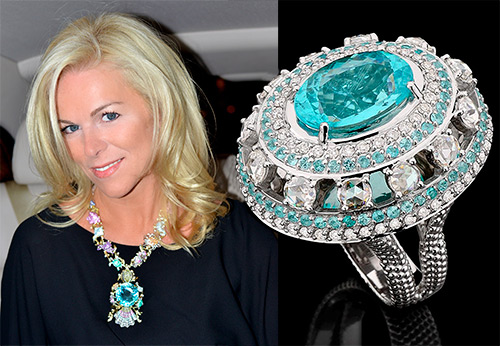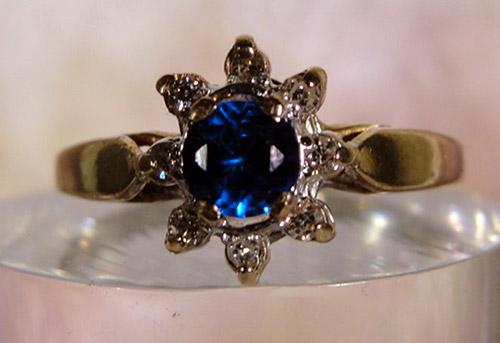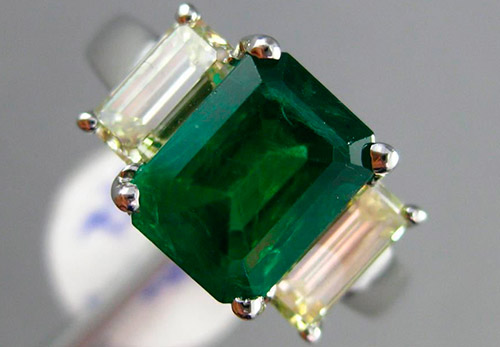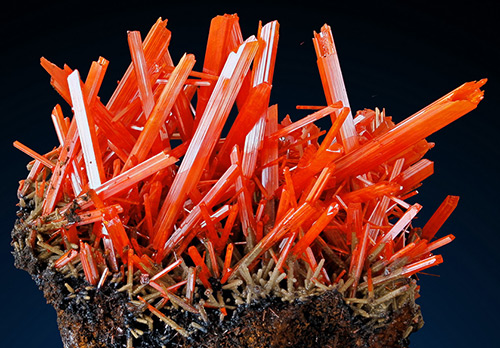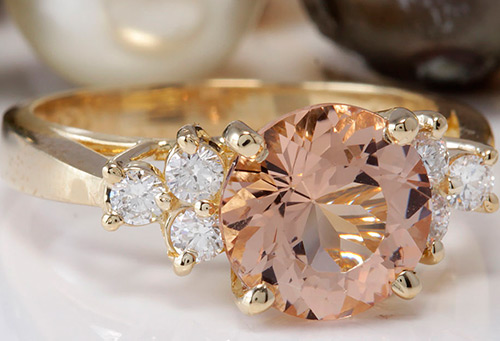Jewelry
Tourmaline gemstone and its properties
Tourmaline is a precious stone known to man for a long time. It has an extraordinary color. According to an ancient Egyptian legend, the stone, traveling from the Sun to the Earth, has absorbed all the colorful splendor of the rainbow. The beauty of the stone was admired even in the ancient world. At that time, red tourmalines were especially prized.
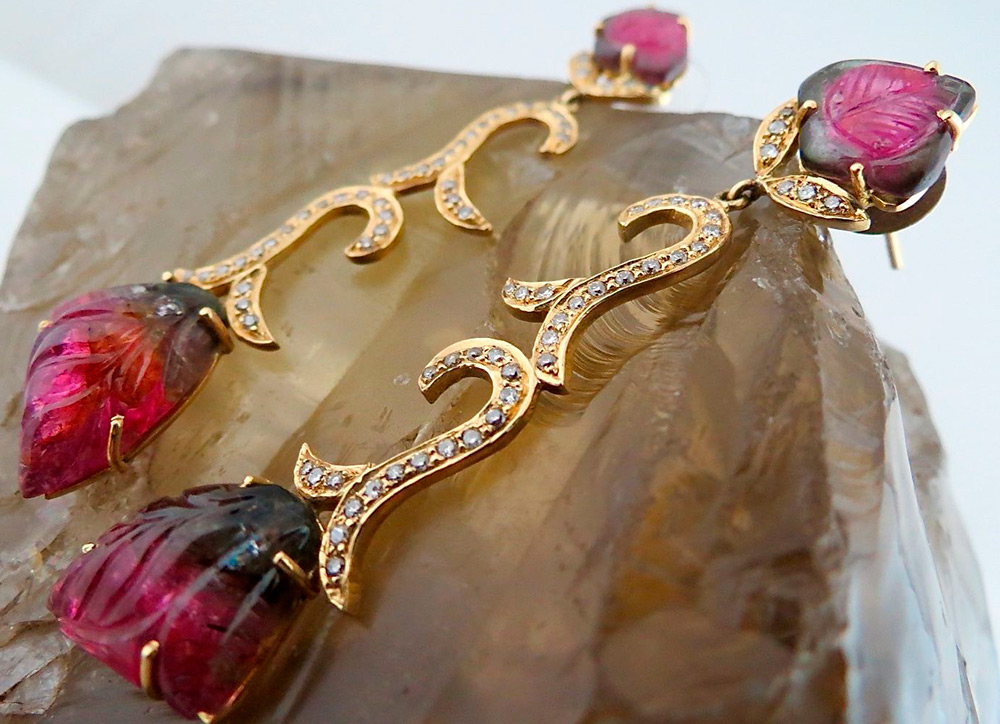
Tourmaline has also been used in oriental jewelry. It was mined in India, Sri Lanka, Burma. In Europe, the first mention of tourmaline dates back to 1703, when Dutch sailors brought many unusual and colorful stones from Ceylon.
In 1707, the mineralogist Harmann described the properties of the crystal, and the stone got its name from the Sinhalese word - "turemali", which means "precious stone" or "multicolored".
However, it turned out that the Europeans were initially interested not in the beauty of the unusual stone, but in its interesting property. When the crystals of the mineral, which were in the form of long sticks, were heated, they began to attract tobacco ash from the smoking pipe. Now this property is called the pyroelectric effect (the appearance of electric charges on the surface of crystals when exposed to temperature). Ancient philosophers wrote about this phenomenon in their works, and at the beginning of the 18th century, tourmaline was called the "Ceylon magnet".
There are beautiful gems on Earth, which jewelers, of course, know about, but for them there was no one who would have promoted them on the world jewelry market. Tourmaline had a different fate, it turned out to be a popular stone, and was promoted by none other than the most famous master - Carl Faberge... He loved a beautiful stone called tourmaline and often used it in jewelry.
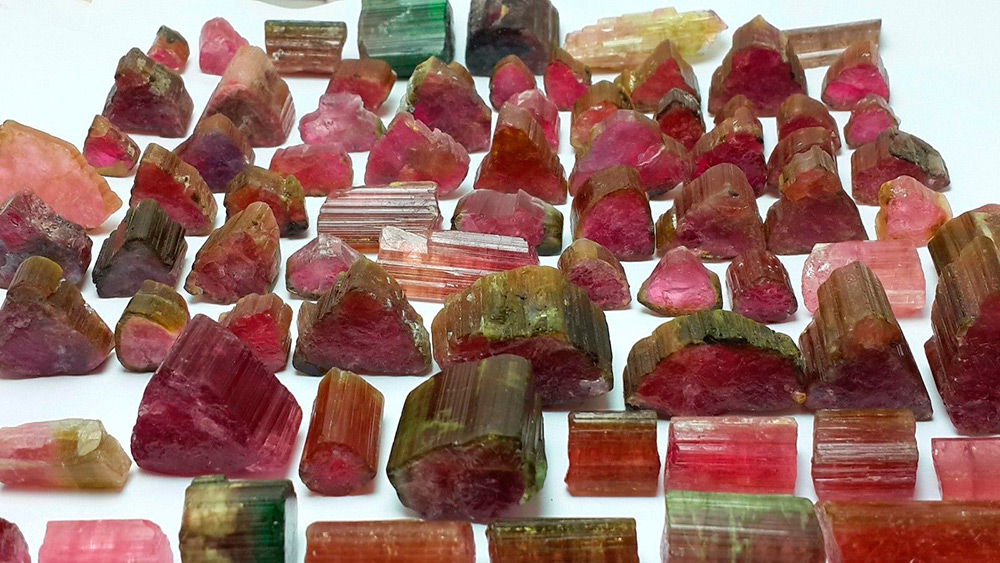
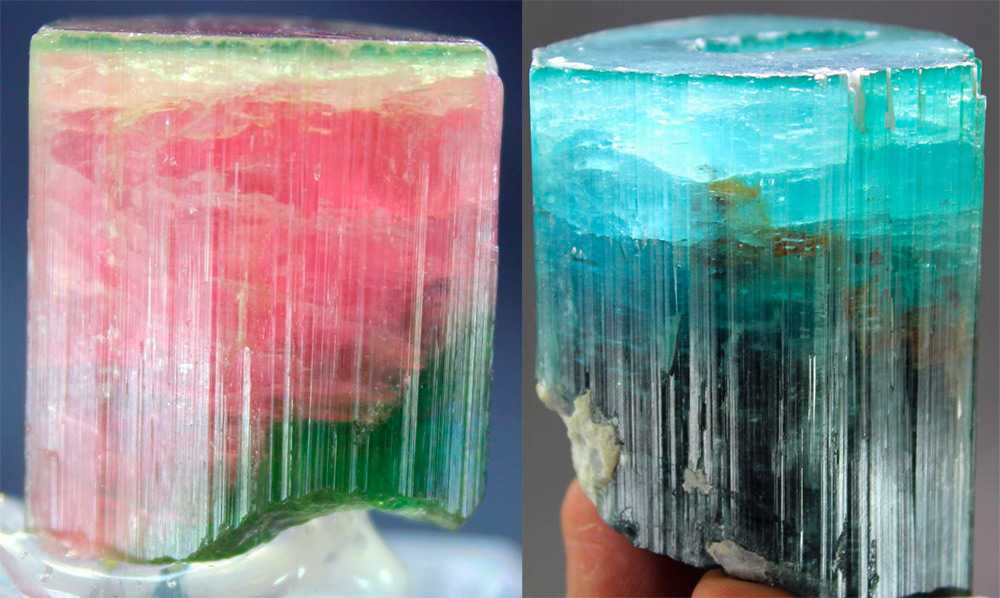
Famous tourmalines
Sometimes amazing and interesting stories happen in our life, there are, of course, sad and even tragic ones. So it is in the life of stones. So, the history of tourmaline also has interesting pages.
In the Diamond Fund of Russia there is such a famous tourmaline stone, which during its long life was called "Caesar's ruby", aka "Red Stone", aka "Big Ruby". This unique stone of pinkish-crimson color in the shape of a bunch of grapes, weighing 255.75 carats, measuring 4x2.7x2.3 cm. In 1777 it was presented by the Swedish king Gustav III to Empress Catherine II as a sign of the upcoming friendship between Sweden and Russia.
An amazing story is told about this stone. According to legend, a beautiful gem had the gift of seeing through walls and penetrating into the essence of things. The stone was presented to Caesar by Cleopatra. However, the gem could not save Caesar, he died from the betrayal of a friend. Then the red stone fell into the hands of Charlemagne and "helped" him to create a huge empire in Western Europe.
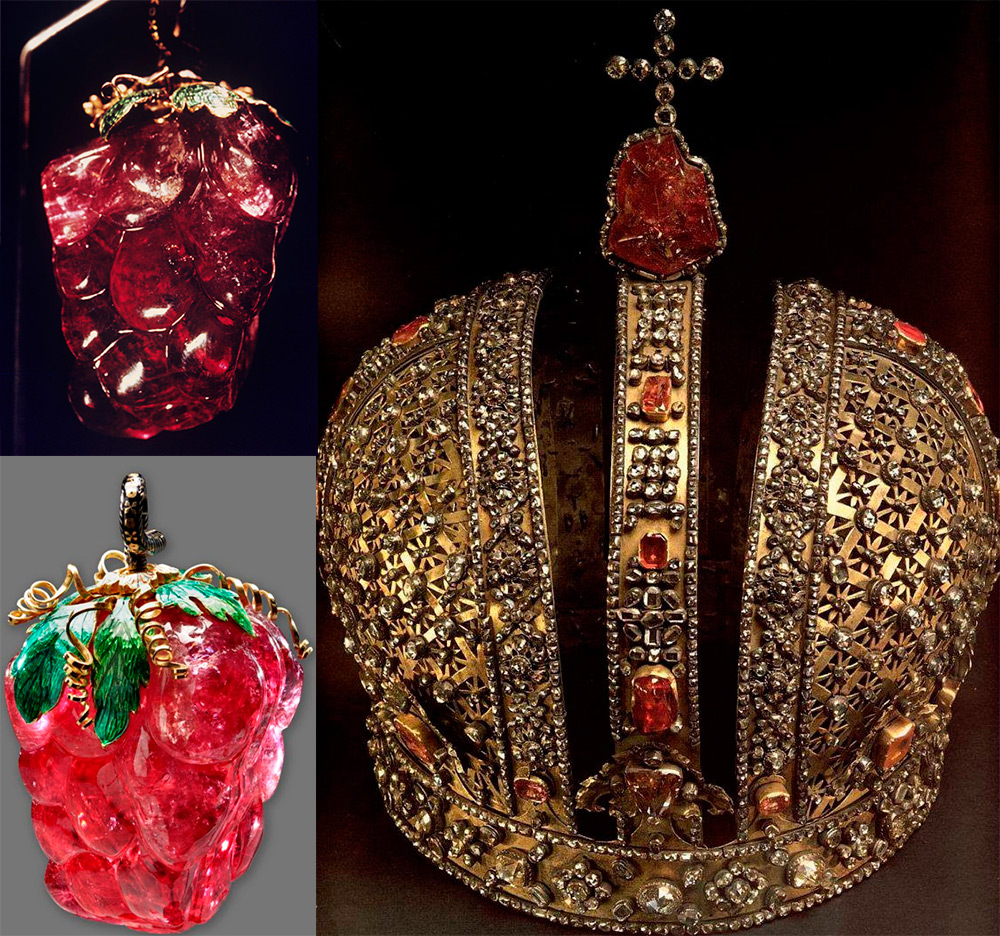
Time passed and gem passed into the hands of the Templars, and then to the Jesuits, who presented it to the French king Charles IX. After the death of the king, his widow gave the stone to her brother, the King of Bohemia, Rudolph II. And finally, in 1648, the stone ended up in the hands of the Swedes as a trophy of war.
The stone all this time, traveling from one country to another, from one king to another, lived under the name of a red ruby, sometimes it was considered a spinel. And only in the twentieth century, academician A.E. Fersman established that this famous stone is actually tourmaline (rubellite from Burma), moreover, the academician specified that the stone was processed by Indian jewelers.
Another tourmaline story. The stone in the crown of Anna Ioannovna is a large red tourmaline weighing 500 carats. However, at first he visited the crown of Catherine I at a time when, by decree of Tsar Peter I, the coronation ceremony was introduced instead of the wedding ceremony.And in 1724 a crown was made for Catherine I, which was decorated with this particular tourmaline, it was then called the Chinese ruby, since it was bought by the Russian embassy in Beijing.
And this is not the only tourmaline that ended up in the crown of our kings and emperors. Church regalia was also decorated with tourmalines in Russia, and this can be confirmed by the exhibits of the Armory Chamber of the Moscow Kremlin. Many unique masterpieces of Russian jewelers were carried away by the hurricanes of revolutions and wars, but still some of them survived.
Since the discovery of a deposit of tourmalines in the Urals, they began to be used in jewelry. Russian craftsmen loved tourmaline, they often cut raspberries, bunches of grapes and currants from a gem, and decorated boxes and vases with them.
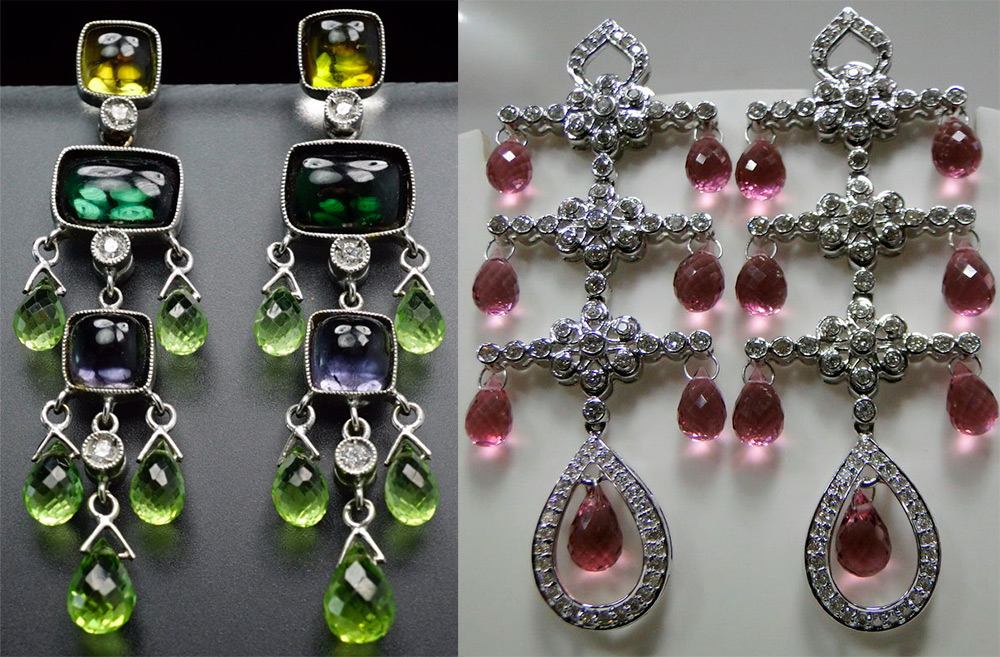
Tourmaline stone properties
Tourmaline in its chemical composition belongs to the silicate of aluminum, boron, magnesium, sodium, iron with various impurities. There are sometimes more than 20 elements in the composition of tourmaline. It is this figure that explains such a number of color shades (more than 50). No other mineral has a similar composition and properties. Each shade has its own name and is interesting in its own way.
Let's consider some of them ...
Achroite - an almost colorless mineral with bluish or pale green shades.
Verdelite - a green stone, its shades can be from grassy to dark green.
Dravit - a dark brown stone, found on the Drava River in Austria, little used in jewelry.
Indigolite - blue tourmaline. The shades of this stone are also different - from pale blue to bright blue. In jewelry, it is used as an imitation of sapphire.
Paraiba - amazing bright colors: emerald green, blue-violet, turquoise, sky blue, indigo. The stones were found in Brazil in the state of Paraiba. These gems are considered the benchmark in terms of brightness and color saturation. They have the highest value of all tourmalines, and sometimes exceed the value of diamonds.
Rubellite - tourmaline of pink-crimson color with many shades, which depend on the amount of manganese impurity.
Sibirit Is a dark cherry tourmaline found in Siberia.
Schorl Is an opaque, almost black mineral.
Chameleonite - in daylight it is an olive green tourmaline, and in artificial light it is brownish red.
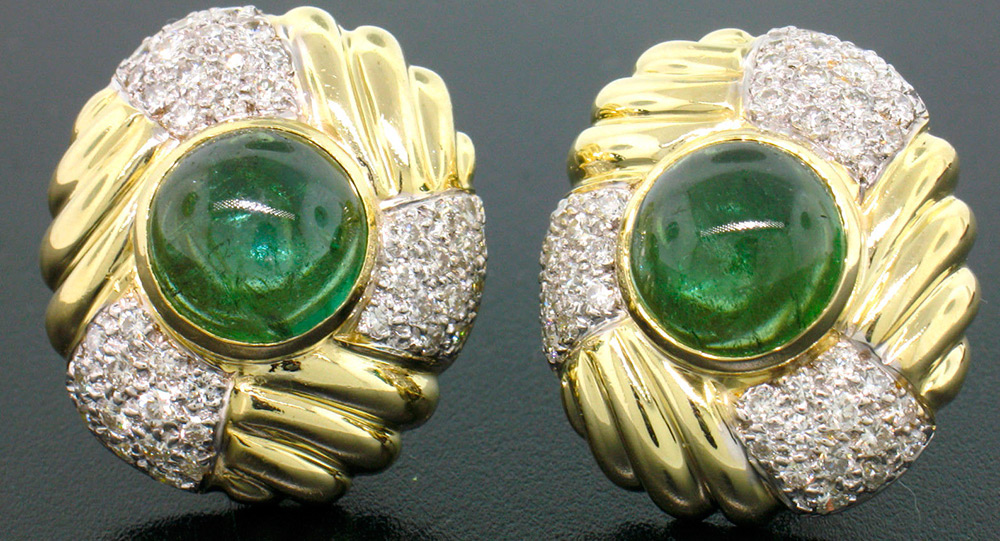
There are tourmalines called polychrome (multicolor). Their crystals are colored in two, three or more colors, which transform into one another. Among them there is a tourmaline called watermelon. This is an amazing stone that resembles a slice of watermelon (skibochka) in cut. No matter how many types of tourmalines there are, each of them is worthy of a separate story.
Crystals have a prismatic shape, sometimes reaching up to 40cm. The gem has the property of dichroism, especially its green and brown varieties. Crystals have different shades from a certain angle of view. This property is always taken into account by jewelers and is used so that the stone in the setting under the rays of light plays and shimmers with all colors.
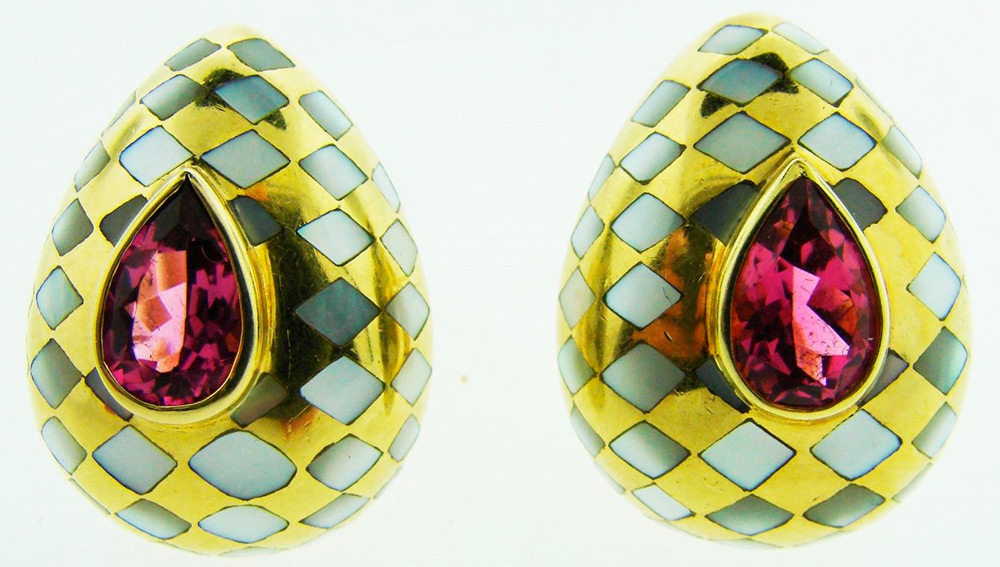
Tourmaline deposits
Tourmaline is mined in many places, deposits are known in Burma, India, Sri Lanka, Thailand, Afghanistan, Greenland, Germany, Norway, USA, the largest stones are in Brazil, and in Russia tourmaline is mined in the Urals and Siberia, moreover, of all shades ...
Tourmaline - medicinal and magical properties
Since ancient times, people have endowed tourmalines with healing and magical properties, and therefore have always used them as talismans and amulets. Lithotherapists now claim that tourmalines have a positive effect on the endocrine and nervous systems, dispel fears, and concentrate attention.
And one more unique property, which is attributed to tourmaline - it is a powerful remedy for cancer. Here you can believe and not believe, but the fact is that each stone in its composition contains certain elements capable of many miracles.
Research suggests tourmalines may be indicators of radioactivity.As already mentioned, there are more than 20 elements in the mineral, and each of them has its own properties and has a certain effect on the owner of the stone. Therefore, it is believed that tourmaline is a universal healer, it seems to surround a person with its protective field. The gem has a beneficial effect on human health, creates a sense of peace and security, helps with diseases of the liver and circulatory system.
As for the magical properties, it is assumed that the influence of the stone on a person, depending on the color of the crystal. For example, red tourmalines give tremendous erotic energy (astrologers' statement), green ones awaken creative forces and contribute to a cheerful mood.
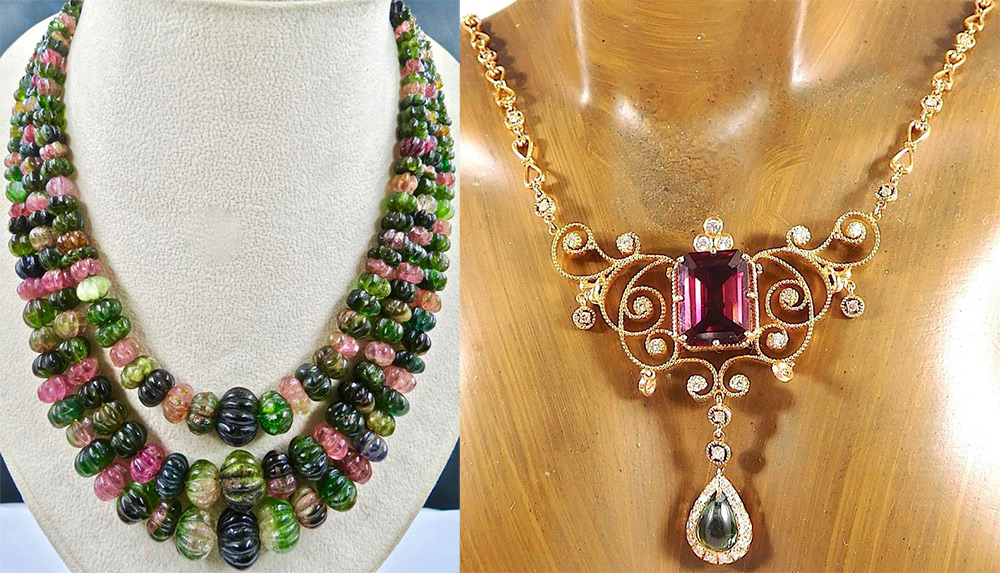
In addition to all the aforementioned abilities of the stone, it also has anti-aging properties, especially for green tourmalines. Blue tourmaline promotes good healthy sleep, black tourmaline absorbs negative energy and neutralizes negative emotions. Colorless stones create mental and physical balance, multi-colored stones help to look to the future with optimism.
Tourmalines are good in both gold and silver. Astrologers recommend wearing them in pendants and rings on the index finger of the right hand or on the middle finger of the left hand.
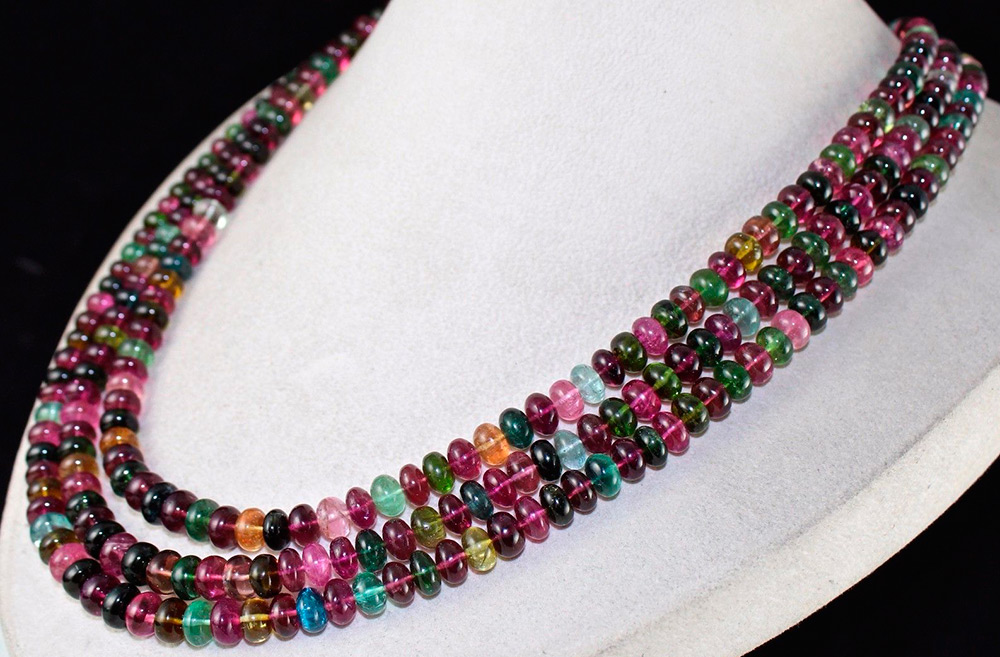
Tourmaline stones in jewelry
Tourmalines are superior to all other gems in terms of the variety of colors, and therefore are appreciated by jewelers. Since the crystal is to some extent soft, it is used less often for rings. But as pendants, earrings and brooches, its beauty is perfect.
Tourmalines are cut with brilliant cut at the top and stepped at the bottom. For earrings, a teardrop shape is used. If the stones are fibrous, they cabochon cut, so you can reveal the effect of "cat's eye". In any case, the crystal is cut in such a way as to reveal its maximum beauty, play of color, play of light, depth and saturation of shades. Tourmalines can be classified as ornamental stones and precious, it all depends on the color and transparency.
The most valuable are transparent tourmalines of green, blue and crimson-red colors, as well as polychrome ones. There are very expensive stones - more than $ 5,000 per carat, there are tens of thousands of dollars, for example, paraiba tourmalines. But there are those that have a very low price.
There are no artificial tourmalines, there are successful glass imitations. Refined tourmalines are sometimes used in products. They are obtained by heating to 400 - 650 ° С, red-brown ones become pink, and dark greens - an emerald hue.
They say that they are suitable for those born under the sign of Scorpio, Cancer, Sagittarius. But the tourmaline stone is so beautiful that it is impossible to refuse it, regardless of the sign of the zodiac.
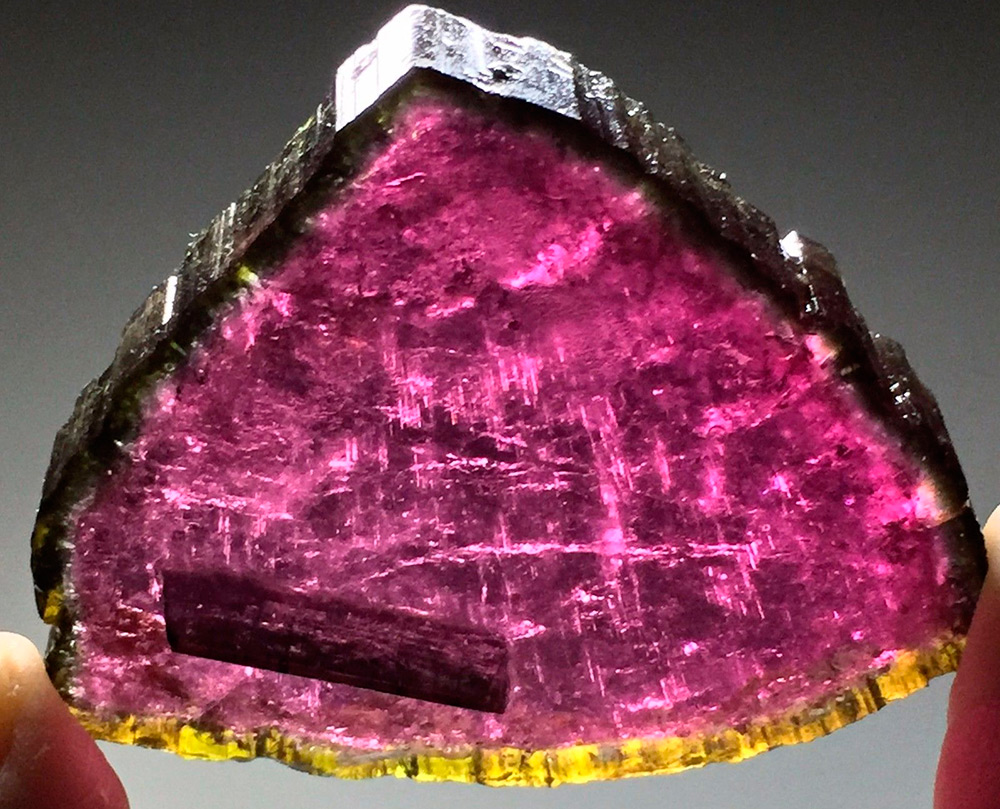
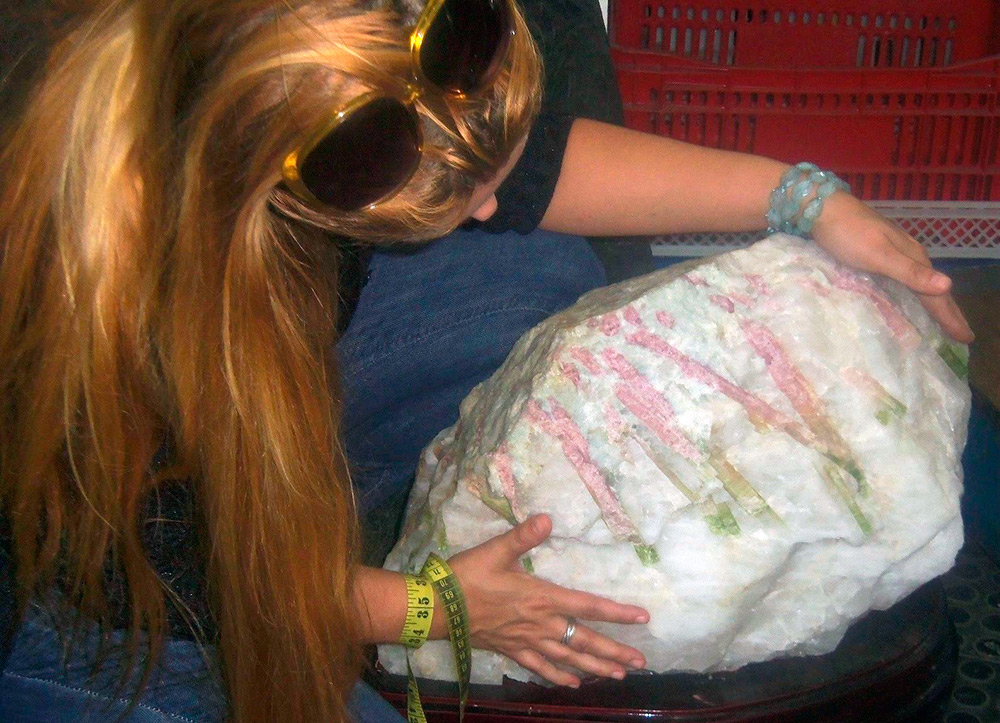
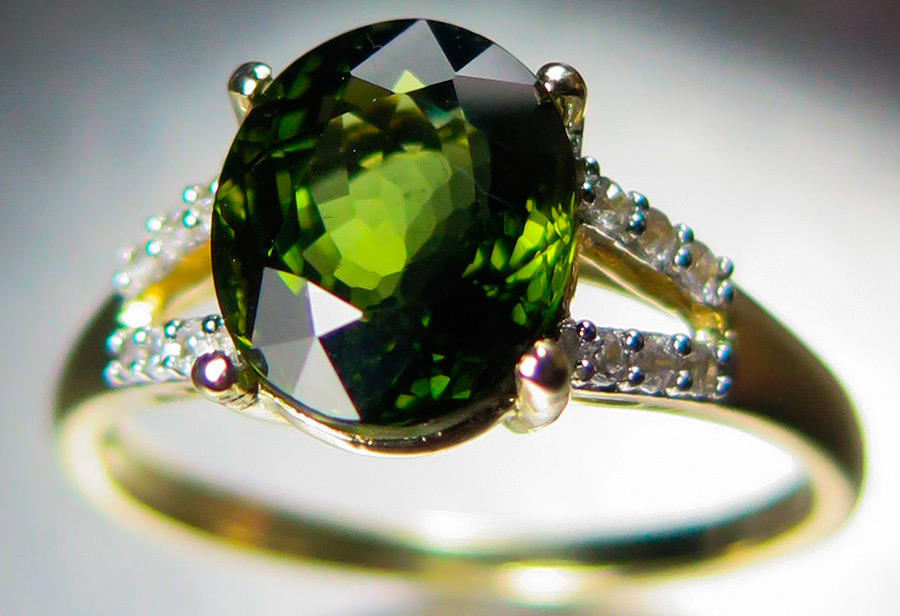
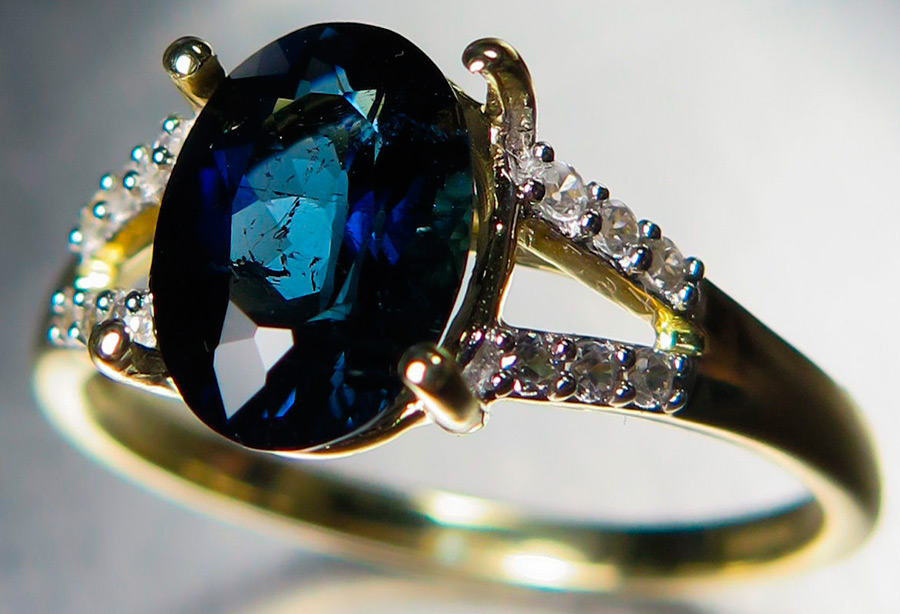
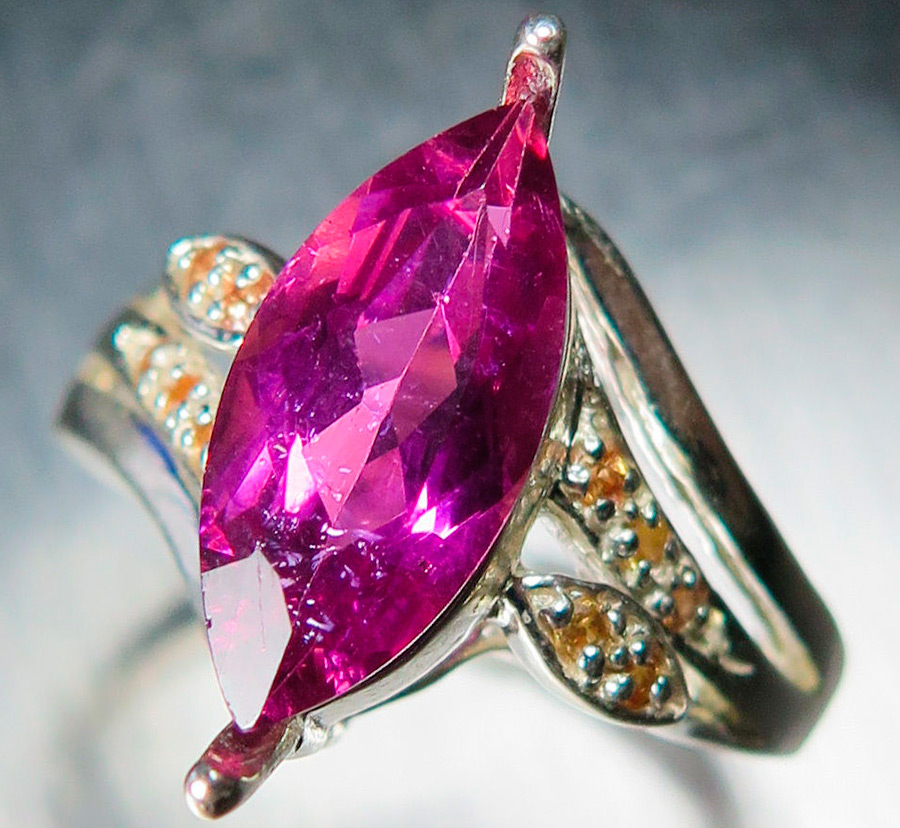
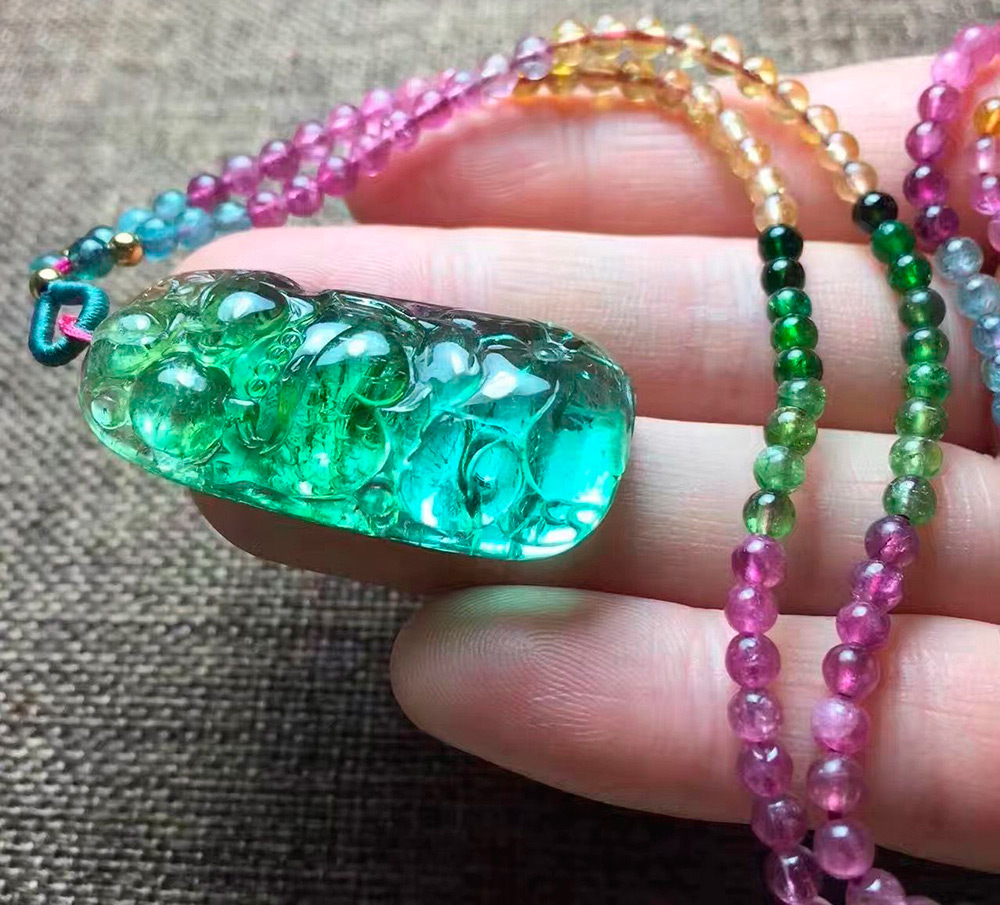
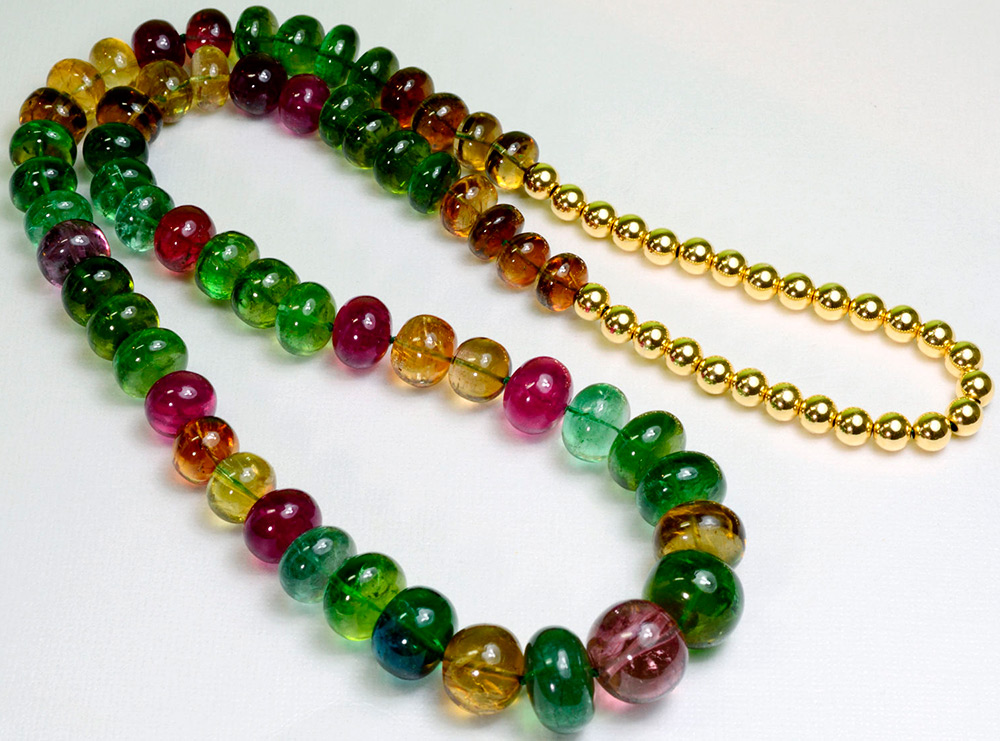
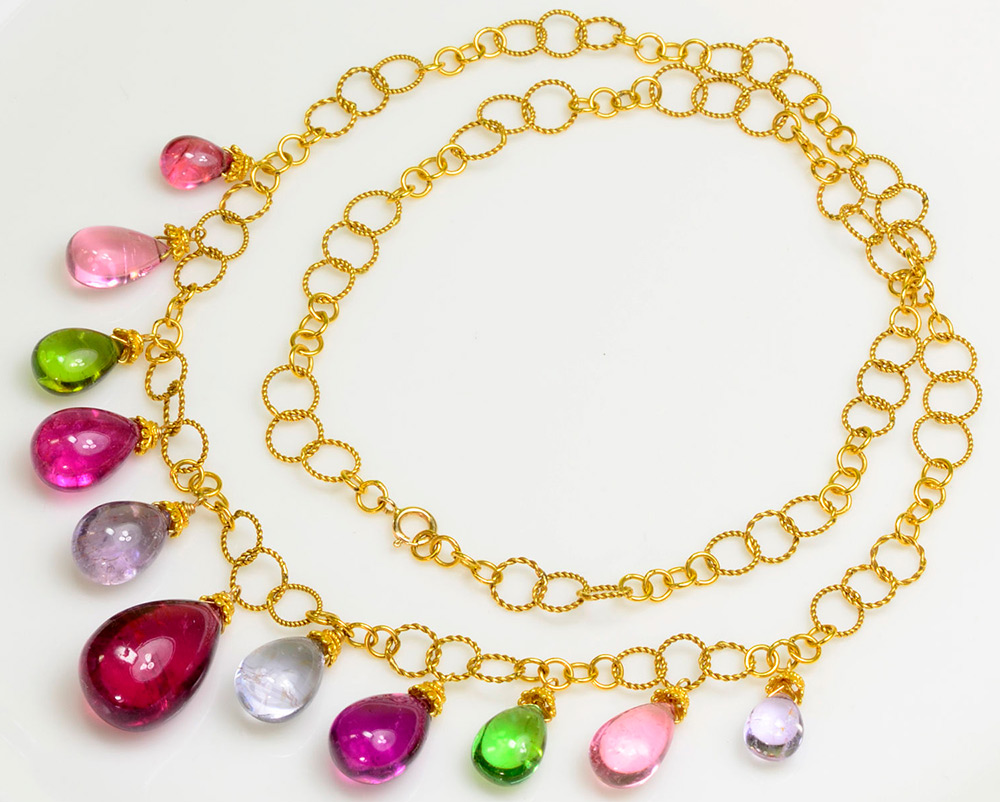
Comments and Reviews
Add a comment
Rating news
Shades of clothing that make women look younger
What shades of hair make women younger: rules and photos
Funny wedding dresses - photos and ideas
12 most expensive down jackets for the winter
How to look 25 at 40: tips from supermodels
Beautiful schoolgirls
Anti-aging haircuts and hairstyles for women
Fashionable skirts for autumn and winter
Fashionable women's trousers for the cold season
Fashionable and stylish sandals for summer 2024
Spring-summer 2024
 Fashionable dresses and tops with thin spaghetti straps
Fashionable dresses and tops with thin spaghetti straps
 Bandana tops: how to wear stylishly and beautifully
Bandana tops: how to wear stylishly and beautifully
 How to put together the perfect men's wardrobe for the summer
How to put together the perfect men's wardrobe for the summer
 Trendy shorts for spring-summer 2024
Trendy shorts for spring-summer 2024
 Fashionable skirts for spring-summer 2024: a guide to online shopping
Fashionable skirts for spring-summer 2024: a guide to online shopping
 The most fashionable dresses spring-summer 2024: styles and colors
The most fashionable dresses spring-summer 2024: styles and colors
 Fashionable total look 2024: image ideas and trends
Fashionable total look 2024: image ideas and trends
